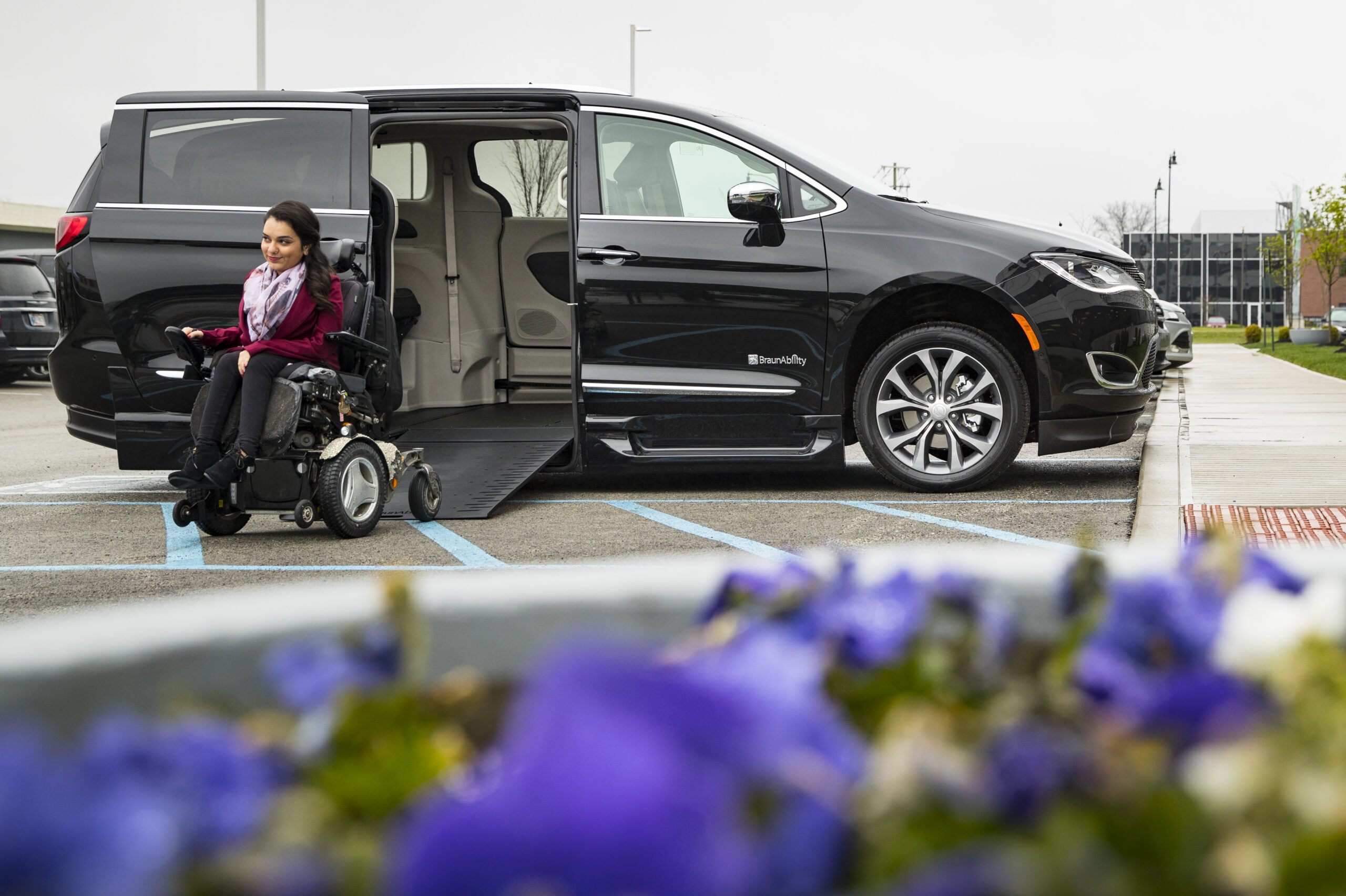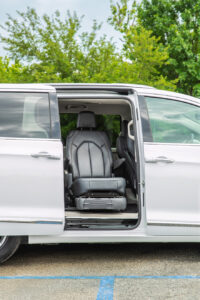
We all love cruising down the highway in our trusted car. But what if we tell you that the very vehicle you so dearly adore could be driving us toward an environmental catastrophe? Research highlights that the transport sector accounts for nearly 21% of total CO2 emissions globally, with road vehicles such as motorbikes, cars, buses, and trucks contributing to over one-third of these emissions.
This relentless release of pollutants has not only contaminated our air but also exacerbated the greenhouse effect that has increased global warming, shifted weather patterns, disrupted wildlife habitat, and caused irreversible damage to the planet Earth.
If you want to contribute to green living and help mitigate these severe planetary effects, consider transitioning to electric wheelchair vehicles or hybrid vans. These vehicles offer a dual benefit: minimizing environmental footprints while enhancing mobility for individuals with disabilities.
 Role of Wheelchair Accessible Vans in Sustainability
Role of Wheelchair Accessible Vans in Sustainability
Wheelchair-accessible vans have transformed how individuals with mobility concerns commute from point A to point B. These vans are equipped with different modifications and features, such as efficient ramps, power doors, hand controls, or the Braun Turny Evo swivel seat, which improves accessibility and comfort. Since most of these features are manually or electrically operated, they don’t add to the carbon footprint.
Unlike traditional, gas-guzzling vehicles, electric wheelchair-accessible vans come with high-efficiency batteries and motors. Hybrid models combine a conventional engine with an electric motor and use significantly less fuel than their purely fossil-fuel-powered counterparts. For the planet, this translates to less drilling, less pollution, and slower depletion of finite natural resources.
Plus, as the technology advances and becomes more widely adopted, the infrastructure for electric vehicles, including charging stations, is expanding. This not only makes it easier to choose and use these eco-friendly vans but also encourages more people to think green when it comes to transportation.
Advantages of Electric Wheelchair Accessible Vans
Below are some of the environmental benefits of using electric wheelchair-accessible vans:
Zero Emissions
According to the United States Environmental Protection Agency, traditional vehicles with internal combustion engines (ICE) burn fossil fuels like gasoline and diesel and emit about 4.6 metric tons of carbon dioxide annually. This notorious greenhouse gas contributes to global warming and climate change, but that’s just the tip of the pollution iceberg.
Besides CO2, ICE vehicles emit particulate matter such as volatile organic compounds (VOCs), nitrogen oxides, carbon monoxide, and sulfur dioxide. These substances don’t just degrade air quality but also cause ground-level smog, which is linked to respiratory issues, heart diseases, neurological disorders, cancer, and other health problems.
However, electric vehicles (EVs), like our electric wheelchair-accessible vans, boast zero tailpipe emissions. That means every errand run, every park visit, and every doctor’s appointment contributes absolutely nothing bad to our air pollution.
Increased Energy Efficiency
When it comes to energy efficiency, electric wheelchair-accessible vans have a significant edge over conventional vehicles. Traditional IC vehicles boast more than 2,000 moving parts that convert only about 12%-30% of the energy stored in gasoline to power. The rest of the energy goes to waste either through heat dissipation in the exhaust or friction between the numerous components.
In contrast, electric vehicles (EVs), including electric wheelchair-accessible vans, boast an energy conversion rate of approximately 77%, according to the Fuel Economy. This heightened efficiency is mainly attributable to the fact that electric wheelchair-accessible vans have no more than 20 moving parts that do not generate as much heat during operation. Plus, the electric motor converts kinetic energy back into stored electrical power when the vehicle slows down, enhancing the overall efficiency.
Lower Resource Consumption
Electric wheelchair vans also contribute to lower resource consumption in the broader picture of vehicle manufacturing and operation. Both traditional and electric vehicles require extensive raw materials, including metals such as steel, magnesium, titanium, copper, and aluminum, with significant environmental impacts, including habitat destruction, water use, and greenhouse gas emissions.
But even after manufacturing, traditional vehicles continue to consume non-renewable resources in the form of petrol or diesel fuel, contributing to ongoing environmental degradation and resource depletion. However, electric WAVs run on electricity, which can be generated from various renewable resources, such as wind, solar, and hydroelectric power.
Like What you're reading? Subscribe to our Newsletter and get new updates directly to your inbox
Future Prospect and Challenges of Eco-friendly Wheelchair Vans
While eco-friendly vans are fairly sustainable, they are not without their challenges. For instance, there are limited charging stations in rural or underdeveloped areas, so these vehicles may not be suitable for individuals living in or frequently traveling to such locations.
Even when charging stations are accessible, recharging can take anywhere between half an hour to more than 12 hours which may not be feasible in emergency scenarios where time is of the essence.
Additionally, the range of eco-friendly wheelchair vans can also pose a dilemma. Known as ‘range anxiety,’ the fear of running out of power without access to a charging station can be especially problematic for wheelchair users who require reliable transportation for their daily activities. With their more predictable fueling options, traditional vans might offer a sense of security that current electric models cannot yet match.
The temperature sensitivity of eco-friendly wheelchair vans’ batteries further complicates matters. Extreme cold or heat can drastically reduce battery efficiency and lifespan, affecting the van’s reliability and increasing maintenance costs over time.
Moreover, hybrid wheelchair vans incorporate advanced eco-friendly technology that, while beneficial to the planet, may not be as beneficial to your wallet.
Tips to Reduce Carbon Footprint Using Traditional Vehicles
Since electric wheelchair vans are not that popular yet, you can implement a few things to minimize your environmental footprint. For example, if you use a traditional wheelchair van, you should avoid idling. Idling wastes fuel and pollutes without getting you anywhere. With a hybrid van, you’ll want to do things like avoiding car warm-up in cold temperatures, turning off your car at red lights, accelerating gradually, and maintaining a steady speed to increase the “green” benefits.
And don’t forget about maintenance—poorly maintained engines emit more smoke and consume more fuel. To combat this, make sure to schedule regular oil changes, filter replacements, and check-ups with a qualified automotive technician.
Unlock a Cleaner Future with Clock Mobility
If you’re looking to modify your existing electric vehicle for wheelchair accessibility or planning to buy a new van that’s as environmentally clean as it is accessible, Clock Mobility is here to help. With decades of experience, we’re committed to providing top-notch mobility solutions and maintenance services to fulfill your unique requirements. Call us at (866) 380-3326 or visit one of our convenient locations in Michigan to find a ride that’s eco-friendly and sustainable.
